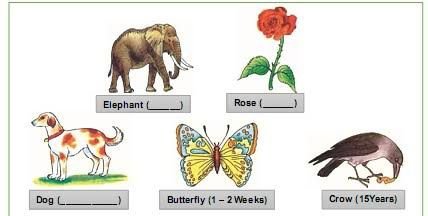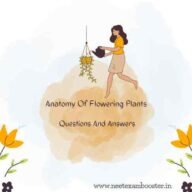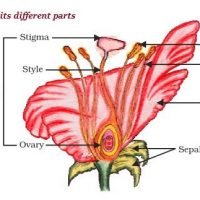Reproduction In Organisms Questions For Neet PDF is here. These questions are totally based on NCERT and class notes.
Reproduction In Organisms Chapter is associated with class 12 chapter 1 for CBSE and NEET.

Answer Keys are also given below of this page. So what are you waiting for go solve and check your answer.
All the best.
Reproduction In Organisms Important Questions For Neet
1) The period from birth to the natural death of an organism represents?
a) Reproductive phase
b) Cell cycle
c) Life span
d) Life style
2) No individual is immortal except?
a) Single celled organisms
b) Green plants
c) Sponges
d) Drones
3) Find out the correct statement?
a) Life span of organisms are necessarily correlated with their sizes
b) The sizes of crows and parrots are not very different, so their life spans are almost similar
c) A peepal tree has much shorter life span as compared to a mango tree
d) Reproduction is essential for continuity of species on the earth
4) Which of the following sequences of organisms is correct in respect of life spans?
a) Banyan tree > Parrot > Elephant > Crocodile > Crow
b) Crow > Crocodile > Elephant > Parrot > Banyan tree
c) Banyan tree > Elephant > Crocodile > Parrot > Crow
d) Crow > Parrot > Elephant > Crocodile > banyan tree
5) Find out the organism with highest life span?
a) Tortoise b) Horse
c) Dog d) Fruit fly
6) Life span of tortoise is?
a) 100 – 150 years b) 250 years
c) 20 years d) 1 year
7) How organisms reproduce, it depends upon?
a) Habitat of organisms
b) Internal physiology of organisms
c) Genetic make up
d) All of the above factors
8) Which of the following is a false statement?
a) All organisms have evolved similar mechanism to multiply and produce offsprings
b) Asexual reproduction is uniparental
c) Sexual reproduction is generally biparental
d) In asexual reproduction no fertilization occurs
9) Individuals of a clone?
a) Are genetically similar but morphologically different
b) Are morphologically similar but genetically different
c) Are morphologically and genetically similar
d) Are genetically and phenotypically different
10) Clone is the product of?
a) Sexual reproduction
b) Sexual or asexual reproduction
c) Amphimixis
d) Asexual reproduction
11) Asexual reproduction is common?
a) Among single celled organisms, only
b) Among single celled organisms, plants and all animals
c) Among single celled organisms, plants and all animals
d) Among single celled animals, plants and animal with simple organizations
12) In Monerans and Protists (Amoeba, Paramecium, Euglena, etc) asexual reproduction occurs by?
a) Budding b) Multi fission
c) Binary fission d) Amphimixis
13) Among the following which one is not method of asexual reproduction?
a) Budding b) Layering
c) Sowing d) Binary fission
14) Reptiles and birds are?
a) Oviparous
b) Viviparous
c) Ovoviviparous
d) Viviparous and oviparous respectively
15) Offsprings of oviparous animals are at greater risk as compared to offsprings of viviparous animals because?
a) Proper embryonic care and protection is lesser
b) Embryo is not developed
c) Progenesis are with more variation
d) Progenies are larger

16) Ploidy of ovary, anther, egg, pollen, male gamete and zygote are respectively?
a) 2n, 2n, n, 2n, n, 2n
b) 2n, 2n, n, n, n, 2n
c) 2n, n, n, n, n, n,
d) 2n, 2n, n, 2n, 2n, 2n
17) Animals which give birth to young ones are said to be?
a) Viviparous b) Amphibious
c) Coelomates d) Oviparous
18) Menstrual cycle is characteristic to
- Most seasonal breeders
- Human females
- Old world monkeys and apes
- Cows
a) 2, 3, 4 b) 2, 3
c) 3, 4 d) 1, 2
19) Some plants where flowering occurs more than once, the interflowering period is known as?
a) Juvenile phase
b) Vegetative phase
c) Mature phase or Adult vegetative phase d) Senescent phase
20) All of the following could be considered advantages of asexual reproduction in plants EXCEPT?
a) Success in a stable environment
b) Increased agricultural productivity
c) Increased ability to adapt to change
d) Ability to clone an exceptional plant
21) Find out correct order of vegetative propagules of plants like Potato, Ginger, Agave, Bryophyllum and Water Hyacinth?
a) Offset, bulbil, leaf bud, rhizome and eyes
b) Leaf bud, bulbil, offset, rhizome and eyes
c) Eyes, rhizome, bulbil, leaf bud and offset
d) Rhizome, bulbil, leaf bud, eyes and offset
22) An example of parthenogenesis in the development of fruit is the one?
a) With viable seeds after fertilization
b) With viable seeds after pollination
c) With viable seeds without fertilization
d) Without seeds after pollination
23) Endogenous budding occurs in?
a) Hydra
b) Marine sponge
c) Fresh water sponge
d) Obelia
24) Which tissue is required to be present in between stock and scion during grafting?
a) Xylem b) Phloem
c) Meristem d) Cambium
25) Where does maturity is observed in the sporophytic stage of the plants?
a) In gametes
b) In primary structures
c) In spores
d) In eggs
Reproduction In Organisms Important Questions For Neet – Answer Keys
1) C. Life span
2) A. Single celled organisms divides before die so they remain immortal naturally
3) D. Reproduction is essential for continuity of species on the earth
4) A. Banyan tree > Parrot > Elephant > Crocodile > Crow
5) A. Tortoise
6) A. 100 – 150 years
7) D. All of the above factors
8) A. All organisms have evolved similar mechanism to multiply and produce offsprings
9) C. Are morphologically and genetically similar
10) D. Asexual reproduction
11) D. Among single celled animals, plants and animal with simple organizations
12) C. Binary fission is most common in Monerans and Protists (Amoeba, Paramecium, Euglena, etc)
13) C. Sowing of seed – Sexual method (Seeds are the sexual products)
14) A. Oviparous
15) A. Proper embryonic care and protection is lesser
16) B. 2n, 2n, n, n, n, 2n
17) A. Viviparous
18) B. 2, 3
19) C. Mature phase or Adult vegetative phase

20) C. Increased ability to adapt to change is feature of genetic variability which comes through sexual reproduction
21) C. Eyes, rhizome, bulbil, leaf bud and offset
22) C. With viable seeds without fertilization
23) C. Fresh water sponge
24) D. For successful grafting to take place, the vascular cambium tissues of the stock and scion plants must be placed in contact with each other.
25) B. In primary structures











 Click Here To Download Now
Click Here To Download Now





